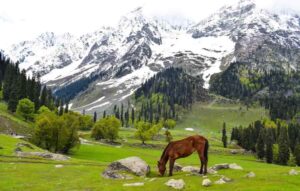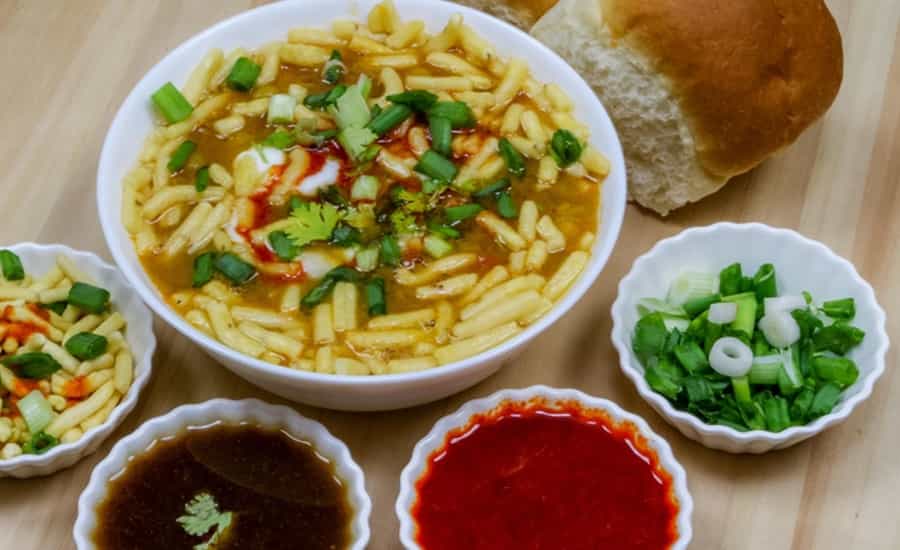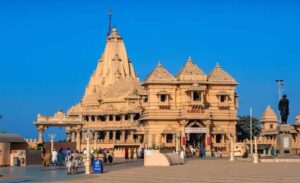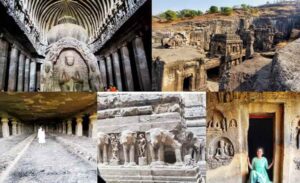Jai Jagannath! Everything You Need to Know About Rath Yatra of Puri in 2023
One of the biggest processions that India witnesses every year is the Rath Yatra. The festivities hailing from the little-known state of Odisha manages to envelop the nation’s devotees in a religious fervour. We have listed all that you have to know about it!
However, the beauty of the tradition may be far beyond our reach in physical space but the overwhelming sentiments attached to the festival are linked to the heart. It is important to stay at home this year to avoid further escalation of cases but we can cherish the feeling of knowing that the festivities and the devotion remains firm against any hardship. One of the most remarkable features of the festival is that it is mobile.
All You Need To Know About Rath Yatra 2023
The 9-day event involves the procession of devotees and is an event that can be traced back to the Hindu scriptures of Brahma Purana, Padma Purana, Skanda Purana and even Kapila Samhita. Broadcasted live, we can witness the zeal of the event but before that, it’s important to know the roots and significance of this festival which Hindus revere so deeply. This article will address the important details regarding the Rath Yatra for better understanding of the event.
Puri Rath Yatra Dates for 2023: Tuesday, June 20, 2023
- Dwitiya Tithi Begins – 11:25 AM on Jun 19, 2023
- Dwitiya Tithi Ends – 01:07 PM on Jun 20, 2023
What is the Rath Yatra?
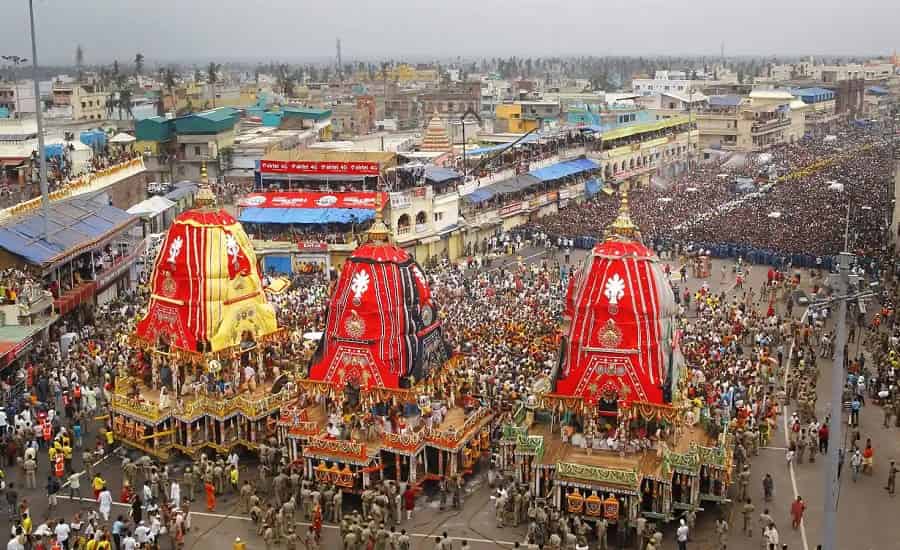
Rath Yatra is a historical procession that takes place within the small pilgrimage town of Puri, Odisha. The terms Rath refers to chariot and Yatra refers to journey in Sanskrit. True to its name, the festival involves a massive procession where the important deities are taken from the Jagannath Temple to the Gundicha Temple, 2.5km away. The deities are placed within chariots which are pulled by devotees to its destination. Moreover, the chariots weighing 85 tonnes each are then brought back to the Jagannath Temple on the 10th day after staying in the Gundicha Temple for 7 days.
The procession even makes a stop at the Mausi Maa Temple in Puri who is revered as the deities’ maternal aunt, for Lord Jagannath’s favourite Poda Pitha. The massive devotion exemplified by the blood, sweat and tears of the devotees along with the stories and traditions of the festival is what draws such a fascination from all over the country.
Furthermore, the Rath Yatra is a 9-day event that involves various traditional practices. On this occasion, the state of Odisha is revived with a zestful spirit with celebrations seeping into the homes of the locals as well. The month is marked with religious practices and preparation of delicacies that are relished during the time.
What is the Significance of the Festival?
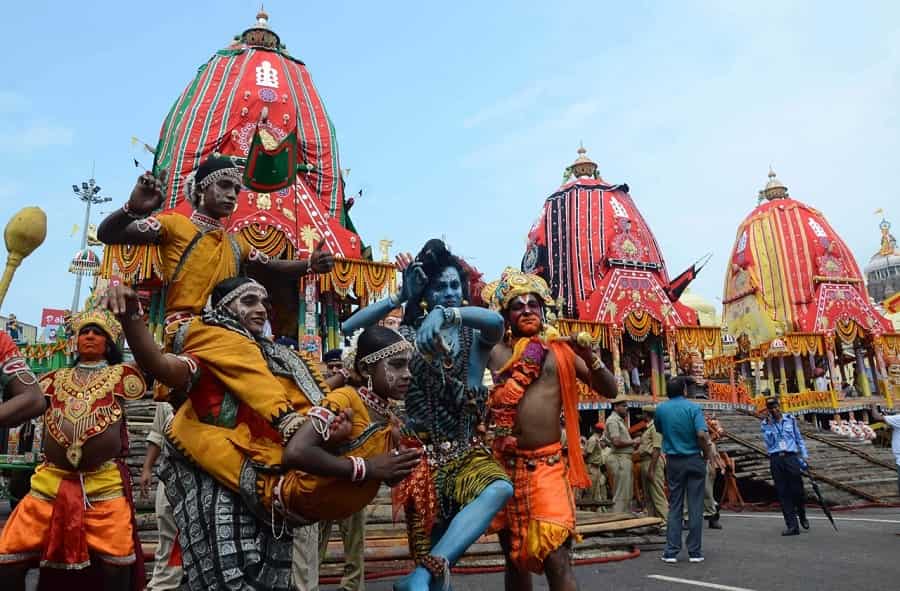
The festival commemorates the annual visit of Lord Jagannath to Gundicha Temple via the Mausi Maa Temple in Puri, Odisha. The origins of the festival is rooted in the legend of Lord Krishna. While being away from home, Lord Krishna heard the callings of his devotees who wished to meet him. Hence, the festival celebrates the return of Lord Jagannath, an abstract representation of Lord Krishna, along with his siblings Lord Balabhadra and Devi Subhadra to his home in Vrindavan from Dwarka.
Further on, the festivities involve the recreation of the events of Lord Krishna’s return home from the epic Mahabharata. There are various other stories associated with the festival that involves Lord Krishna. The Rath Yatra is observed by Hindus but it represents unity in diversity in its traditions. Before the Bhakti movement spread in Medieval times, the Rath Yatra served as a unifying force for the lowest and highest strata of the society in Medieval Odisha. Further exploration of the motifs and practices rooted in history provide a greater understanding and significance of the festival.
Moreover, it served as a bastion of unity from the 13th century for all castes and classes in Odisha which helped it thwart invasions by the Turks and Pathan for about 400 years. A symbol of devotion and unity – the Jagannath Rath Yatra imbibes the tenderness of humanity.
When is the Rath Yatra Celebrated?
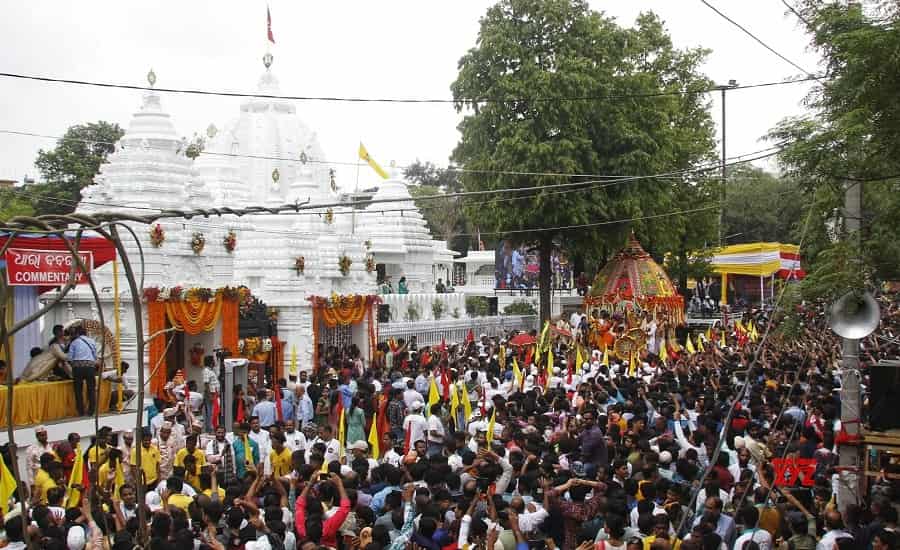
The day for Rath Yatra is based on the Hindu Lunar Calendar. The date, according to the calendar, is fixed as the Dwitiya Tithi during the Shukla Paksha of Ashadha Month (second day in the bright fortnight of the month). It ends on Ashadha Shukla Dashami (the tenth day in the bright fortnight of the month). The Rath Yatra of 2020 begins on 23rd June and will end on 4th July. The various practices and rituals that shall be taking place are listed below with their respective dates :
- Gundicha Yatra (Rath Yatra begins) on 23rd June.
- Hera Panchami will be conducted on 27th June.
- Bahuda Yatra will take place on 1st July.
- Suna Besha will be conducted on 2nd July.
- Niladri bije will be conducted on 4th July.
What are the Highlights of the Festival?
There are various beautiful and awe-inspiring rituals that take place during the festival that draws an audience.
The Rath Yatra
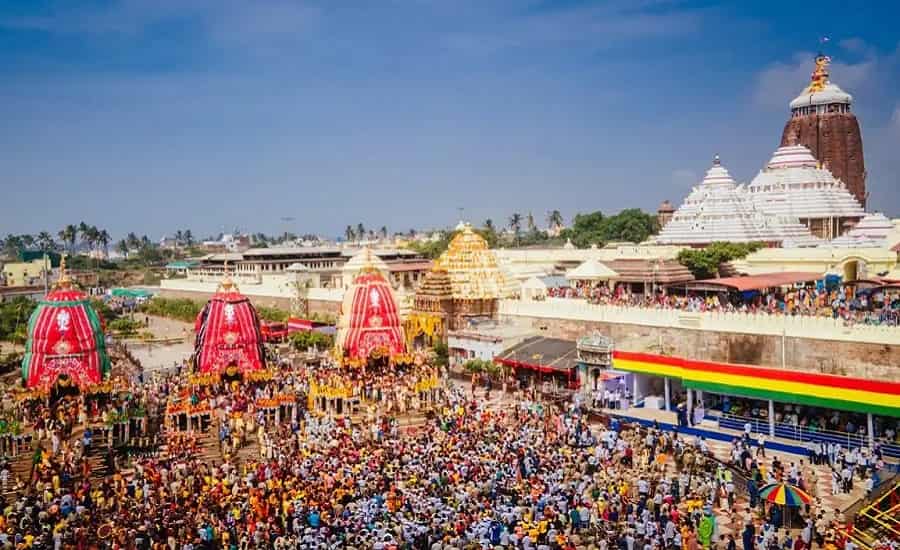
Although initial rituals for the Rath Yatra take place in the Akshaya Tritiya, the actual event takes place after the Nava Yauvana Vesa. This annual event is a much-awaited time for many pilgrims from all across the country. The Rath Yatra features three deities that of Lord Jagannath decorated with yellow and red applique cloth named as Nandighosha, that of Lord Balabhadra wrapped in red and green applique cloth and named as Taladhwaja, and finally, that of Devi Subhadra covered in red and black applique cloth and named as Devadalana.
The Rath Yatra begins with the Goti Pahandi ritual which involves carrying the deities to their chariots by the devotees. First and foremost, the protector of the lords, Sudarshan Chakra is carried, followed by Devi Subhadra, Lord Balabhadra and then, Lord Jagannath. The ritual’s beauty and splendour is what makes it so attractive! Further on, followed by rituals such as Chera Pahanra (brooming of chariots of Puri king), the procession of pulling chariots begins.
Hera Panchami
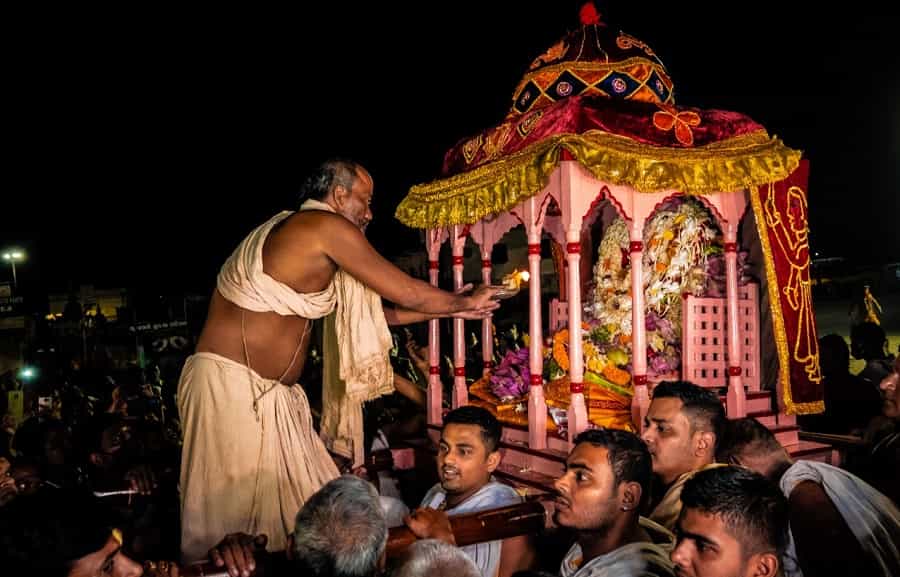
During the stay at the Gundicha Temple, the legend unfurls the visit of Goddess Lakshmi. The legend weaves a humorous tale of Goddess Lakshmi’s anger towards her husband, Lord Jagannath for not informing and involving her in his journey. Moreover, the Hera Panchami ritual involves the preparation to leave for the Jagannath Temple while Goddess Lakshmi breaks one of the wooden pieces of Lord Jagannath’s chariot in anger.
To avoid further escalation of her anger, the day marks the return journey of the three Lords back to the main temple where Goddess Lakshmi awaits. The procession back to the Jagannath Temple is the Bahuda Yatra.
Poda Pitha
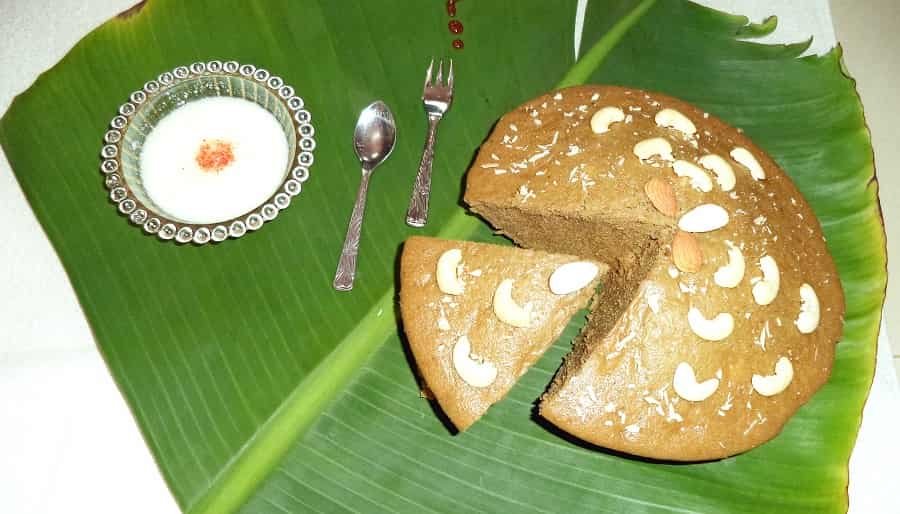
On their way back, the three deities make a stop at their maternal aunt’s place, the Mausi Maa Temple. Here they are served a delicious Odia sweet called the Podo Pitha – Lord Jagannath’s favourite. The Poda Pitha is an exquisite local dish that is prepared and served during Odia festivals. Furthermore, the dish is now enmeshed with people’s childhoods and good memories in Odisha.
Suna Besha
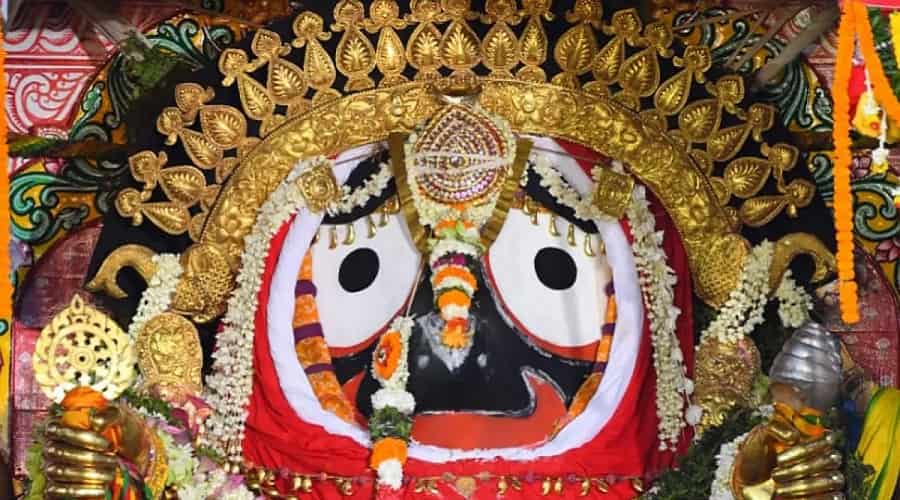
After reaching the main temple, the Lords stay in the chariots for one more day. The very next day, the ritual of Suna Besha takes place where the Lords are adorned with gold. This ritual dates back to the Medieval times where all the gold won by a kingdom is devoted to Lord Jagannath. This ritual has transformed into the Suna Besha performed till date.
Niladri Bije
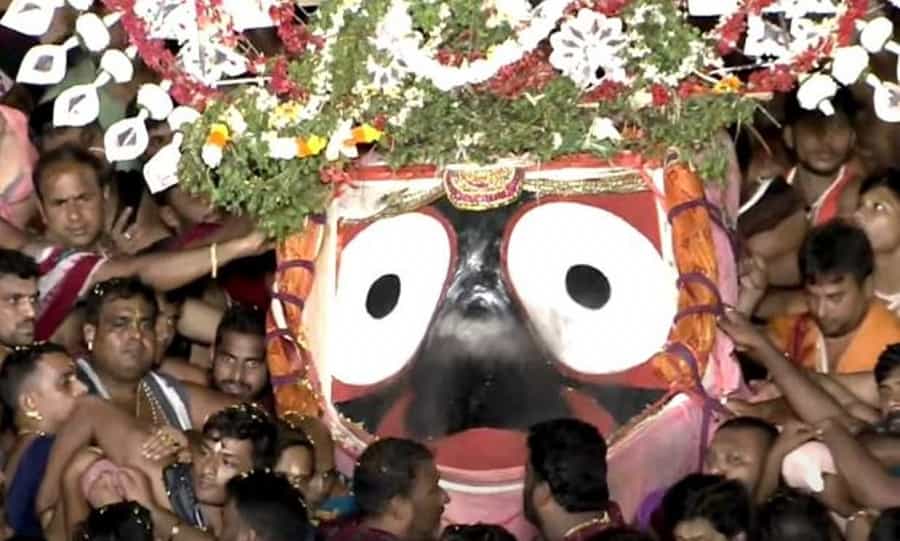
Niladri Bije marks the return of Lord Jagannath to his temple. Although, Lord Jagannath is not allowed into the temple due to Goddess Lakshmi’s anger toward him. While Lord Balabhadra and Devi Subhadra are allowed into the Puri Temple, Goddess Lakshmi and Lord Jagannath’s fight ensues.
Soon, Lord Jagannath appeases Goddess Lakshmi by offering a Rasgulla, which is a sweet made of curd cheese. She soon accepts his apology and allows him to enter the temple. Thus, it marks the end of the Rath Yatra and is also known as Rasgulla Day in Odisha.

